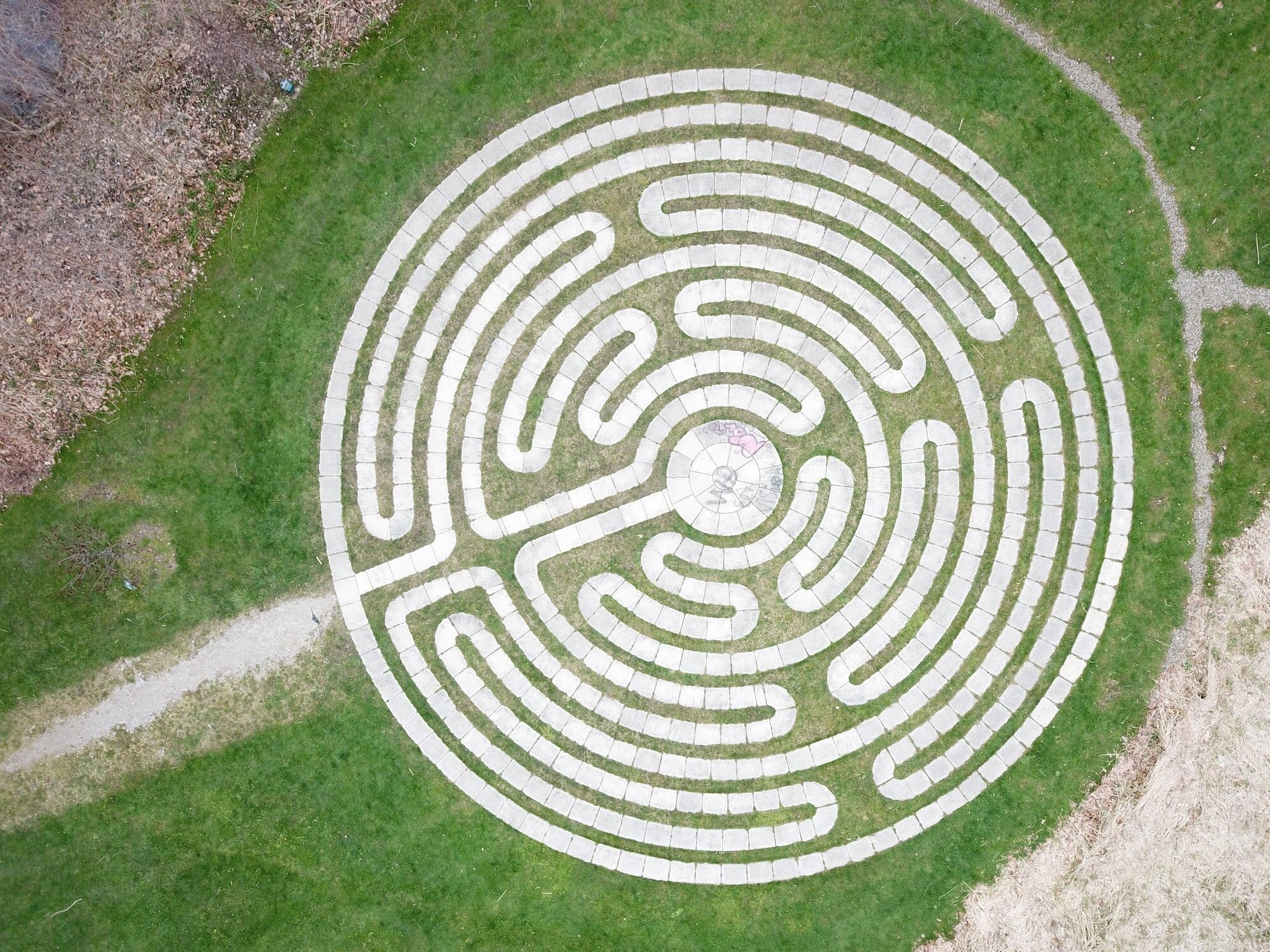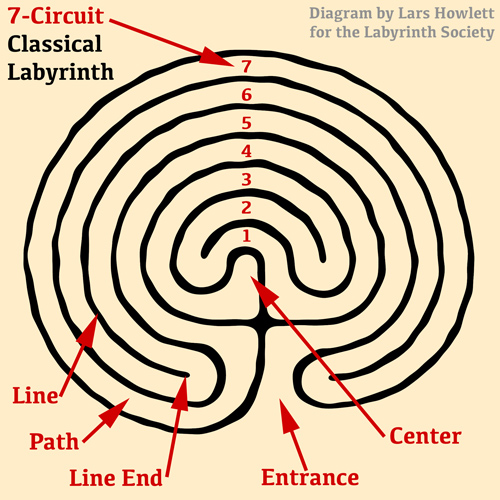

The origin of labyrinths is unknown, but they have been found in many cultures around the world, dating back to at least 4000 BCE. The earliest reported labyrinth was a two-story stone building in Egypt, described by the Greek historian Herodotus. However, the name "labyrinth" is most often associated with the Cretan labyrinth, which was said to be the home of the Minotaur, a mythical creature that was half man and half bull. The Cretan labyrinth is depicted on ancient Cretan coins, and it is believed to have been located at the palace of Knossos.
There are many different types of labyrinths, but they all share some common features. Most labyrinths are unicursal, meaning that there is only one path leading from the entrance to the center. This path often winds and turns, creating a sense of mystery and intrigue. The center of the labyrinth is often seen as a place of transformation or enlightenment.
The design of labyrinths is often based on sacred geometry, which is the study of the underlying patterns of the universe. Some of the most common patterns found in labyrinths include the Fibonacci sequence, the golden ratio, and the enneagram. These patterns are believed to have a calming and meditative effect on the mind and body.
Labyrinths have been used for many different purposes throughout history. They have been used as places of worship, meditation, and spiritual journeying. They have also been used as mazes, games, and even amusement park rides. Today, labyrinths are still used for a variety of purposes, including stress relief, personal growth, and spiritual development.
If you are interested in learning more about labyrinths, there are many resources available online and in libraries. You can also find labyrinths in many public places, such as parks, gardens, and churches. Walking or meditating in a labyrinth can be a powerful and transformative experience.
A meditation labyrinth is a unicursal labyrinth, meaning that there is only one path leading from the entrance to the center. The path is often winding and turns, creating a sense of mystery and intrigue. The center of the labyrinth is often seen as a place of transformation or enlightenment.
Meditation labyrinths are used for walking meditation. Walking meditation is a form of meditation in which you focus on your breath and body as you walk slowly and mindfully. Walking a meditation labyrinth can help you to quiet your mind, focus your attention, and connect with your inner self.
To walk a meditation labyrinth, start at the entrance and follow the path to the center. As you walk, focus on your breath and body. Notice the sensations of your feet on the ground, the sounds around you, and the thoughts and feelings that come into your mind. When you reach the center, pause and rest for a few minutes. Then, retrace your steps back to the entrance.
Meditation labyrinths can be used by people of all faiths and backgrounds. They are a simple and effective way to connect with your inner self and experience the healing power of meditation.
Here are some tips for walking a meditation labyrinth:
- Choose a time and place where you will not be disturbed.
- Wear comfortable clothing and shoes.
- Bring a water bottle and snacks if needed.
- Start at the entrance and follow the path to the center.
- Focus on your breath and body as you walk.
- Notice the sensations of your feet on the ground, the sounds around you, and the thoughts and feelings that come into your mind.
- When you reach the center, pause and rest for a few minutes.
- Retrace your steps back to the entrance.
- Be patient and gentle with yourself.
If you are new to meditation, you may want to start by walking the labyrinth for a few minutes at a time. As you become more comfortable, you can gradually increase the amount of time you spend walking. You can also try walking the labyrinth with a specific intention in mind, such as seeking peace, clarity, or guidance.
Meditation labyrinths can be a powerful and transformative experience. They can help you to quiet your mind, focus your attention, and connect with your inner self. If you are looking for a way to relax, heal, and grow, I encourage you to try walking a meditation labyrinth.
Comments